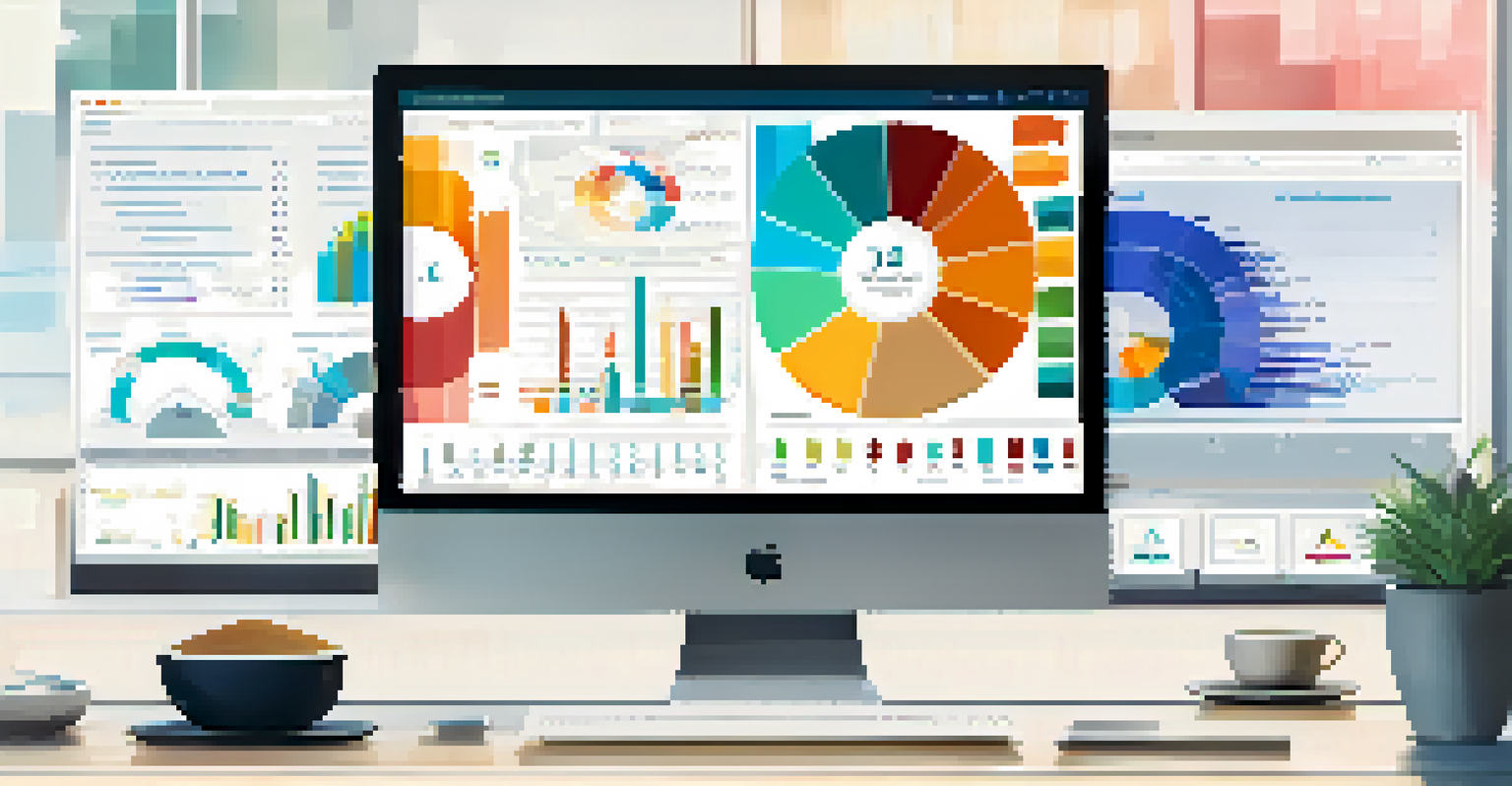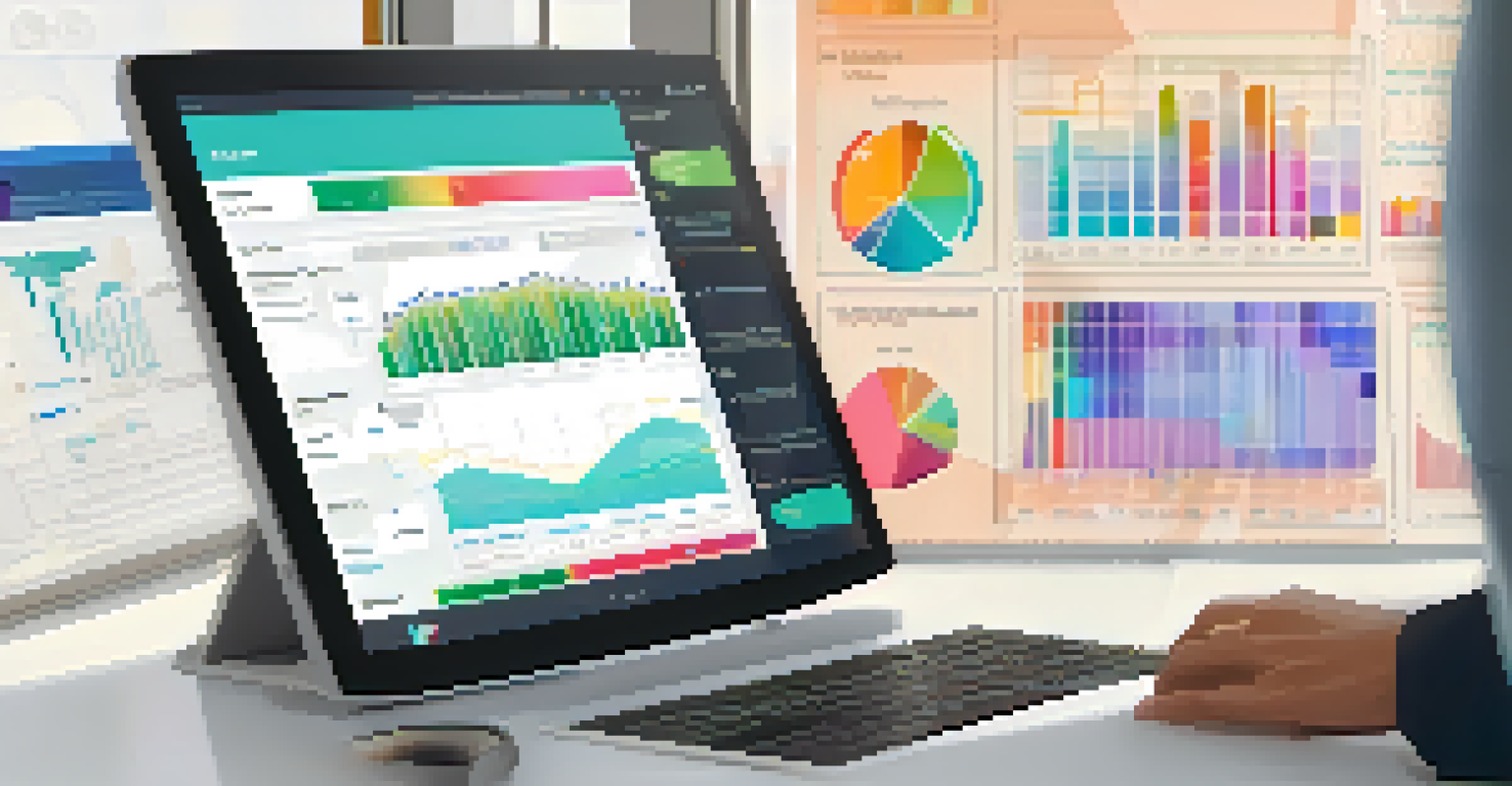Top Business Intelligence Tools for Effective Data Analysis

Why Business Intelligence Tools Are Essential for Businesses
Business Intelligence (BI) tools are critical for companies looking to harness the power of their data. They transform raw data into meaningful insights, enabling informed decision-making. Without these tools, organizations risk losing out on valuable opportunities and facing challenges that could have been avoided.
In God we trust; all others bring data.
In today's fast-paced environment, the ability to analyze data quickly and accurately can set a business apart from its competitors. BI tools provide dashboards and reports that present data in a visually appealing and easily digestible format. This way, stakeholders can grasp complex information at a glance, making it easier to act strategically.
Moreover, BI tools often integrate seamlessly with other software systems, creating a more unified view of data across departments. This integration fosters collaboration among teams, ensuring that everyone is on the same page when it comes to performance metrics and business goals.
Power BI: A Leading Tool for Data Visualization
Power BI is a standout business intelligence tool that excels in data visualization. Its user-friendly interface allows users, even those without technical expertise, to create stunning dashboards and reports. With drag-and-drop functionality, it’s easy to visualize complex data sets in ways that tell compelling stories.

One of the key features of Power BI is its ability to pull data from various sources, whether it’s Excel spreadsheets, cloud-based services, or on-premises databases. This versatility means that businesses can get a comprehensive view of their performance metrics without juggling multiple platforms. Additionally, real-time data updates ensure that users always have the latest information at their fingertips.
BI Tools Enable Informed Decisions
Business Intelligence tools transform raw data into actionable insights, helping organizations make informed decisions.
Power BI also offers robust sharing capabilities, making it easy for teams to collaborate and access insights from anywhere. As a cloud-based service, it can be accessed on multiple devices, which increases its usability for teams that are often on the move.
Tableau: The Go-To Tool for Interactive Dashboards
Tableau is renowned for its interactive dashboard capabilities, allowing users to dive deep into data insights. With its intuitive design, users can create complex visualizations with minimal effort. This tool is perfect for those who want to explore data dynamically and uncover hidden trends.
Data is the new oil.
One of Tableau's standout features is its ability to connect to a wide range of data sources, from simple spreadsheets to large databases. This flexibility means that businesses can analyze data across various platforms, leading to more informed strategic decisions. Users can also easily share their dashboards with team members, fostering a collaborative environment.
Additionally, Tableau’s community is a treasure trove of resources, providing tutorials, forums, and user-generated content that can help beginners and experts alike. This supportive ecosystem enhances the overall user experience and encourages continuous learning.
Qlik Sense: A Data Discovery and Analytics Powerhouse
Qlik Sense is a powerful business intelligence tool that focuses on data discovery and analytics. It empowers users to explore data freely and discover insights that might not be apparent with traditional reporting tools. This self-service capability helps democratize data access across the organization.
What sets Qlik Sense apart is its associative model, which allows users to navigate through data intuitively. Instead of being limited by predefined queries, users can make selections and see how they impact other data points in real-time. This flexibility encourages curiosity and deeper exploration.
Power BI and Tableau Stand Out
Power BI and Tableau are leading BI tools known for their user-friendly interfaces and strong data visualization capabilities.
Moreover, Qlik Sense offers a robust set of features for data visualization, making it easy to create interactive and compelling dashboards. With its cloud capabilities, teams can collaborate effectively and share insights with ease, ensuring that everyone stays aligned on business objectives.
Looker: Integrating Data into Everyday Workflows
Looker stands out for its ability to integrate data into everyday workflows, making analytics a seamless part of business operations. It provides a flexible modeling layer that allows organizations to define metrics and dimensions to suit their specific needs. This means that users can access consistent data definitions across the board.
One of Looker’s unique features is its embedded analytics, which allows businesses to integrate data insights directly into their applications. This functionality ensures that decision-makers have access to real-time data without needing to switch between different platforms. It’s a game-changer for organizations that depend on timely insights.
Additionally, Looker supports collaboration through shared dashboards and reports, promoting a culture of data-driven decision-making. With its intuitive interface, users can easily explore data and generate reports that meet their specific requirements.
Domo: A Cloud-Based Business Intelligence Solution
Domo is a cloud-based business intelligence tool designed for real-time data visualization and collaboration. Its dashboard capabilities allow users to see key performance indicators at a glance, making it easy to track progress toward business goals. This real-time access to data ensures that teams can make informed decisions quickly.
One of the attractive features of Domo is its ability to connect with over a thousand data sources, enabling users to pull in data from various applications seamlessly. This integration helps create a comprehensive view of business operations, which is essential for effective analysis. Furthermore, Domo’s mobile app allows users to access insights on the go, ensuring they stay informed regardless of their location.
Choosing the Right BI Tool Matters
Selecting the appropriate BI tool depends on your organization's size, budget, and specific data requirements for effective analysis.
Domo also emphasizes collaboration, offering features that allow teams to share insights and communicate within the platform. This social aspect fosters a culture of transparency and accountability, which can significantly enhance team performance.
SAS Visual Analytics: Advanced Analytics with Ease
SAS Visual Analytics is a robust tool that combines advanced analytics with user-friendly features. It enables users to visualize complex data sets and uncover insights through intuitive drag-and-drop functionality. This ease of use makes it accessible to both data scientists and business users alike.
What makes SAS Visual Analytics particularly powerful is its analytical capabilities, including predictive modeling and statistical analysis. Users can leverage these features to not only understand past performance but also forecast future trends. This forward-looking approach supports strategic planning and risk management.

Furthermore, SAS Visual Analytics supports collaboration among team members, allowing them to share reports and dashboards effortlessly. This collaborative environment enhances decision-making processes, ensuring that all stakeholders have a voice in shaping business strategies.
Choosing the Right Business Intelligence Tool for Your Needs
Choosing the right business intelligence tool depends on various factors, including your organization's size, budget, and specific data needs. Each tool offers unique features and capabilities, so it’s essential to assess which aligns best with your objectives. For instance, if data visualization is a priority, Tableau or Power BI might be the best fit.
Additionally, consider the level of technical expertise within your team. Some tools, like Qlik Sense and Looker, offer more advanced capabilities that might require a steeper learning curve. On the other hand, user-friendly options like Domo can be ideal for teams with limited technical skills, enabling them to leverage data effectively without extensive training.
Lastly, don’t overlook the importance of integration. Ensure that the BI tool you choose can easily connect to your existing data sources and software systems. This compatibility will not only save time but also enhance the overall effectiveness of your data analysis efforts.